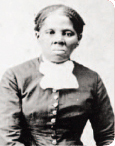BIOGRAPHIES of the CIVIL WAR AND RECONSTRUCTION
ABRAHAM LINCOLN, ROBERT E. LEE, ULYSSES S. GRANT, AND MORE
IMPACT ON AMERICA: COLLECTIVE BIOGRAPHIES
BIOGRAPHIES of the CIVIL WAR AND RECONSTRUCTION
ABRAHAM LINCOLN, ROBERT E. LEE, ULYSSES S. GRANT, AND MORE
Edited by Sherman Hollar

Published in 2013 by Britannica Educational Publishing
(a trademark of Encyclopdia Britannica, Inc.)
in association with Rosen Educational Services, LLC
29 East 21st Street, New York, NY 10010.
Copyright 2013 Encyclopdia Britannica, Inc. Britannica, Encyclopdia Britannica, and the
Thistle logo are registered trademarks of Encyclopdia Britannica, Inc. All rights reserved.
Rosen Educational Services materials copyright 2013 Rosen Educational Services, LLC.
All rights reserved.
Distributed exclusively by Rosen Educational Services.
For a listing of additional Britannica Educational Publishing titles, call toll free (800) 237-9932.
First Edition
Britannica Educational Publishing
J.E. Luebering: Director, Core Reference Group, Encyclopdia Britannica
Adam Augustyn: Assistant Manager, Encyclopdia Britannica
Anthony L. Green: Editor, Comptons by Britannica
Michael Anderson: Senior Editor, Comptons by Britannica
Andrea R. Field: Senior Editor, Comptons by Britannica
Sherman Hollar: Senior Editor, Comptons by Britannica
Marilyn L. Barton: Senior Coordinator, Production Control
Steven Bosco: Director, Editorial Technologies
Lisa S. Braucher: Senior Producer and Data Editor
Yvette Charboneau: Senior Copy Editor
Kathy Nakamura: Manager, Media Acquisition
Educational Services
Hope Lourie Killcoyne: Executive Editor
Nelson S: Art Director
Cindy Reiman: Photography Manager
Karen Huang: Photo Researcher
Brian Garvey: Designer, Cover Design
Introduction by Hope Lourie Killcoyne
Library of Congress Cataloging-in-Publication Data
Biographies of the Civil War and Reconstruction: Abraham Lincoln, Robert E. Lee, Ulysses S. Grant,
and more/edited by Sherman Hollar.1st ed.
p. cm.(Impact on America--collective biographies)
In association with Britannica Educational Publishing, Rosen Educational Services.
Includes bibliographical references and index.
ISBN 978-1-61530-723-4 (eBook)
I. United StatesHistoryCivil War, 18611865Biography. 2. Reconstruction (U.S. history, 18651877)Biography. I. Hollar, Sherman.
E467.B565 2013
973.7092'2dc23
[B]
2012001380
Cover, p. 3 blewisphotography/Shutterstock.com (reins, gun), iStockphoto.com/DNY59 (cap), Library of Congress Prints and Photographs Division, Washington, D.C. (Abraham Lincoln, Ulysses S. Grant); back cover www.istockphoto.com/Sodafish bvba; interior background images www.istockphoto.com/oliopi (geometric), www.istockphoto.com/Bill Noll (floral)
CONTENTS









INTRODUCTION
D uring the American Civil War, where you livedNorth or Southgenerally determined which side you were on.
Generally, but not always.
Take legendary naval officer David Farragut, who was born in the South, in a cabin near Knoxville, Tenn. At the time that the Civil War began, the nearly 60-year-old Farragut had a wife and home in Virginia. Nonetheless, Farragut declared his allegiance to the Union. Another native of Tennessee, Andrew Johnson, a U.S. senator who would later become the 17th president of the United States, vehemently opposed secession and was the only Southern senator not to resign his post when the South seceded.
For those soldiers who did fight for the side that their place of birth had dealt them, the beliefs held by said side werent necessarily held in the fighters heart. Such was the case with the brilliant Confederate general Robert E. Lee. Although he fought valiantly for the South, Lee believed neither in slavery nor secession. And despite his extraordinary success as a soldier, Lee at times seemed uneasy with the idea of war itselffor example, when he expressed in a letter to his son before the outbreak of the war his deep dismay at a union that can only be maintained by swords and bayonets, and in which strife and civil war are to take the place of brotherly love and kindness.

A Currier & Ives lithograph of Confederate General Robert E. Lee, c. 1860 to 1870. Library of Congress, Washington, D.C.
Aside from the issues that led to the war and the rationales of the soldiers involved in the conflict, readers of this book will also learn quite a bit about the presidents of the time and their lives before taking office. Included within are interesting details such as which president once sold real estate, which was a tailor, which had his name changed because of the 19th-century equivalent of a typo, courtesy of West Point, which one attended school for only a year, and which one did not go to school at all.
But this book goes well beyond the lives of the presidents who served in this era. Readers will also learn about the famous Confederate general who, seriously wounded in battle, died soon thereafter as a result of friendly fire, and about the life of the well-known Union general who, much to President Abraham Lincolns consternation, was clearly reluctant to go into battle.
Looking back on historical events can have a way of making them seem inevitable. When it comes to the Civil War and its aftermath, we all know that slavery ended, that the North won, and that the country moved forward as a single nation, albeit one that faced grave problems of readjustment and reconstruction. But reading about those who peopled the erawhether brave or brilliant, villainous or vanquishedmakes the events, the decisions, and the mistakes come alive. In addition, going beyond the famous to introduce lesser-known figures, such as the Northern woman who disguised herself as a man, signed up as a volunteer, and participated in several key battles, adds dimension to a story that still surprises, educates, and unfolds.
Next page
























